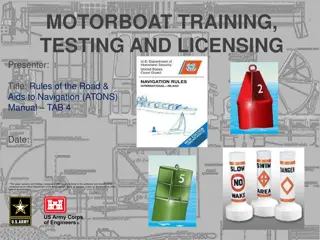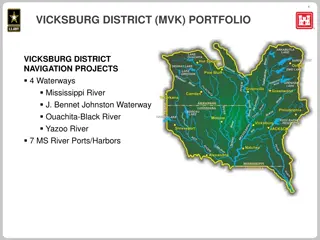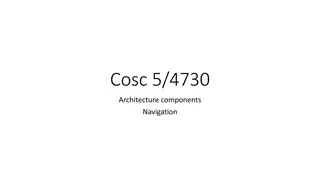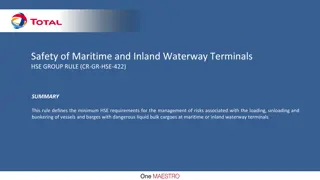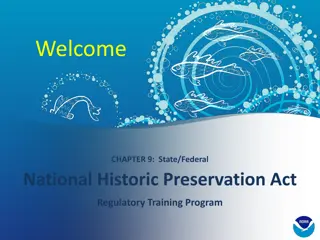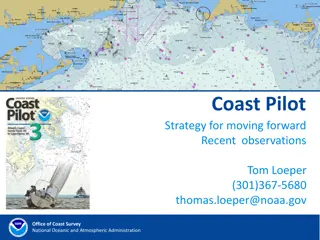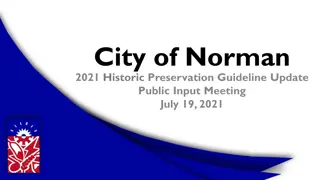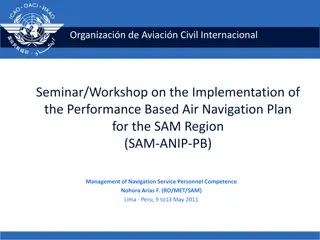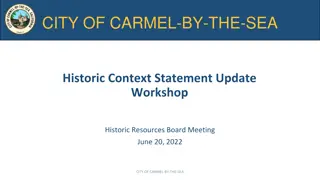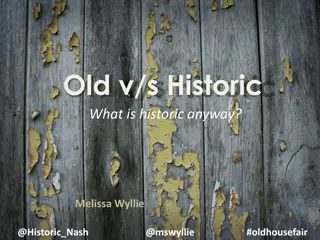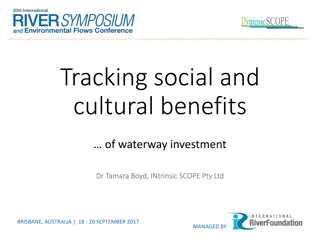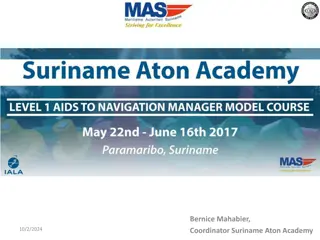Discovering the Lagan Navigation: A Historic Waterway
Explore the history of the Lagan Navigation, a vital waterway connecting Belfast, Lisburn, and Lough Neagh. Learn about the challenges faced by boats navigating the River Lagan, the role of lock keepers, and the fascinating stories of those who lived and worked along the canal. Dive into the past of transportation on Ireland's water motorways through images and firsthand accounts.
Download Presentation

Please find below an Image/Link to download the presentation.
The content on the website is provided AS IS for your information and personal use only. It may not be sold, licensed, or shared on other websites without obtaining consent from the author. Download presentation by click this link. If you encounter any issues during the download, it is possible that the publisher has removed the file from their server.
E N D
Presentation Transcript
The Lagan Navigation www.laganvalleylearning.co.uk www.laganvalleylearning.co.uk
The Lagan Navigation Rivers and canals were the motorways of the past. Before people started to transport goods along waterways, they used horses and carts. This would have taken a long time! The Lagan Navigation is a stretch of water that links Belfast, Lisburn and Lock Neagh.
The River Lagan was not suitable for big boats to travel on. Short sections called cuts of canal were dug to avoid bends or shallow parts of the river. Locks were built to carry the boats over different levels of water in the canal. Weirs were used to control the flow of water from the river into the canal cut. The River Lagan Channel cut Boats could now pass safely!
Lock Keepers Lock keepers were employed to look after the locks and make sure that the boats got through safely. The Lagan Navigation Company who owned the canal, employed them. They were given a house to live in beside the lock as part of the job. grew their own food and sold some if they could. It cost 1 to rent the cottage for a year! Their pay wasn t very high so they George Kilpatrick on the lock gate at Lock No 3
How the lock works 2 3 1 The boat passes through the lower lock gates and into what is called the lock chamber and the lower gates are closed tight. The sluice gate or paddle on the upper lock gates is raised by winding it up. The sluice gate is at the bottom of the gate which means that the water comes through slowly and the lock starts to fill up with the water coming in underneath the lighter. When the water in the lock chamber is at the same level as the water at the top level the upper lock gates are opened and the boat can pass on its way.
Lightermen / Haulers The boats, or lighters, were pulled by a horse walking along the towpath with the hauler. Lightermen would employ a hauler at each end of the canal. Mostly they were farmer s sons who had a horse. As the hauler approached the lock he shouted to the lock keeper to open it and unhitched the horse. The journey with a full boat would have taken about two days.
Dorothys story Dorothy was a Lock Keeper s daughter. She has lots of stories from when she was a little girl When I was around 9 or 10 we were allowed to go on a barge as far as Edenderry and we would come back, usually we had wee old bicycles, old rackety things. The river men were lovely men, they looked after you, made sure you were all right. Only one man I remember had his wife with him, she was not like a woman: a very tough lady, she travelled with her husband, she wore dark, long clothes and was so sun tanned that she was nearly mahogany in colour. They managed; they had a wee stove in their cabins, they survived with very little in those days. I don t remember children on the boats. They would nearly always have dogs, which would have got off at the locks to have a run around.
The Barge Horn There are a number of artefacts important to the Lagan Navigation system . An artefact is an object made by a human, especially one that has historical or cultural value. All of these objects were used on the canal. The barge horn was used for alerting other lighters and letting lock keepers know that the lighters were approaching. The lock keepers would also use these, if they did not use the horns to alert the lighters they might have crashed which meant they would be fined by the Lagan Navigation Company inspectors.
Breakers The main cargo on the boats would have been coal which, powered the factories and mills in the Lagan Valley. Other cargo included flour, turf, tiles, sand and farm produce. Sails used to cross Lough Neagh Cargo Cabin for accommodation Breaker for carrying fresh water The lighters could not drink the river water due to the pollution caused by the industry on the Lagan. It would be carried with them in these barrels or breakers , every lighter had at least one on board.
The Swingle Tree This is called a swingle-tree . A swingle tree is a wooden or metal bar used to balance a horse when pulling a lighter. It was part of the harness used by the canal horses. This system was used until engine powered lighters were invented. The job of a swingle tree is to stop the ropes or chains rubbing the horses shoulders. The swingle trees were attached to the back of the harness by two iron hooks at each end and the rope that was attached to the lighter, which was tied to the hook in the middle.
www.laganvalleylearning.co.uk www.laganvalleylearning.co.uk



![❤[PDF]⚡ Apollo Mission Control: The Making of a National Historic Landmark (Spr](/thumb/21551/pdf-apollo-mission-control-the-making-of-a-national-historic-landmark-spr.jpg)

